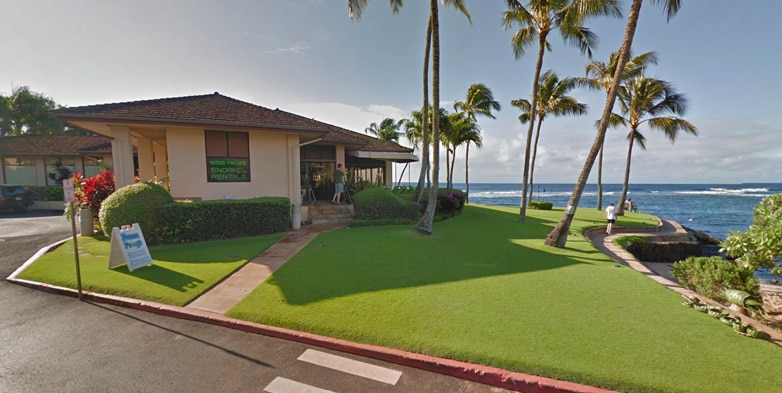The History of Hula
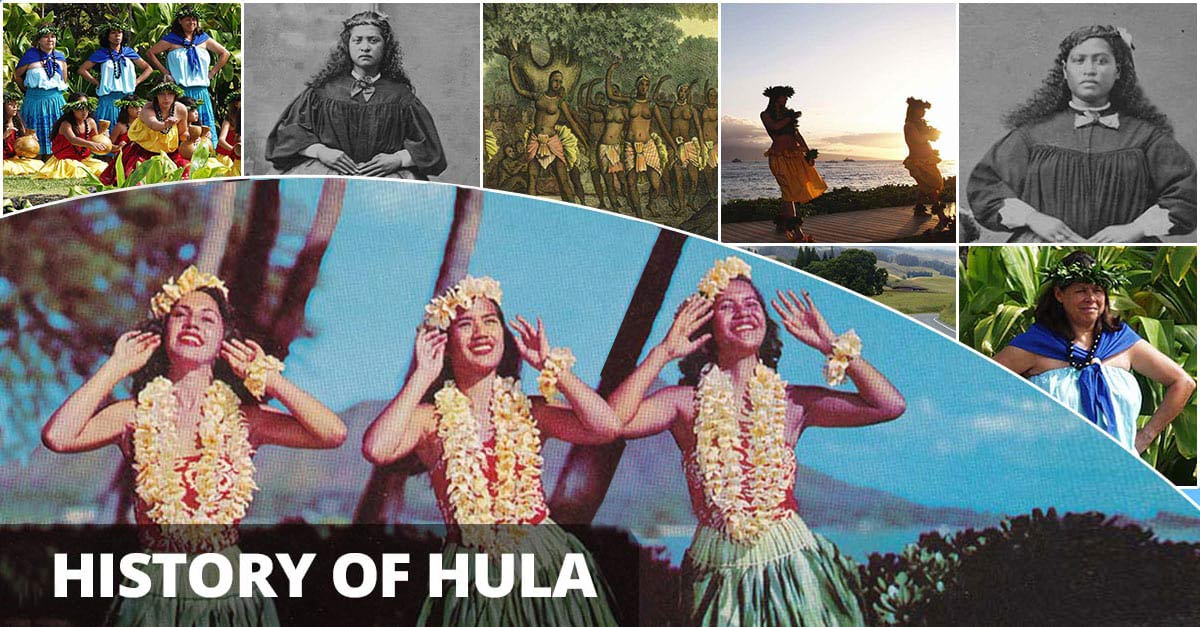
[/et_pb_post_title][et_pb_text admin_label=”Section One” _builder_version=”4.16″ use_border_color=”off” border_color=”#ffffff” border_style=”solid” global_colors_info=”{}”][jpshare]
The History of Hula
Since the dawn of time Mankind has had a need. A need for entertainment. A need for social interaction. A need for artistic expression. And when music hits the ears these needs are transformed into a compulsion for rhythmic movement. Mankind has the need to dance! In Hawaii, this need evolved into one of the most recognizable dance forms in the world: Hula.[/et_pb_text][et_pb_text admin_label=”Section one: Ancient art of hula” _builder_version=”4.16″ use_border_color=”off” border_color=”#ffffff” border_style=”solid” global_colors_info=”{}”]
Ancient Art of Hula
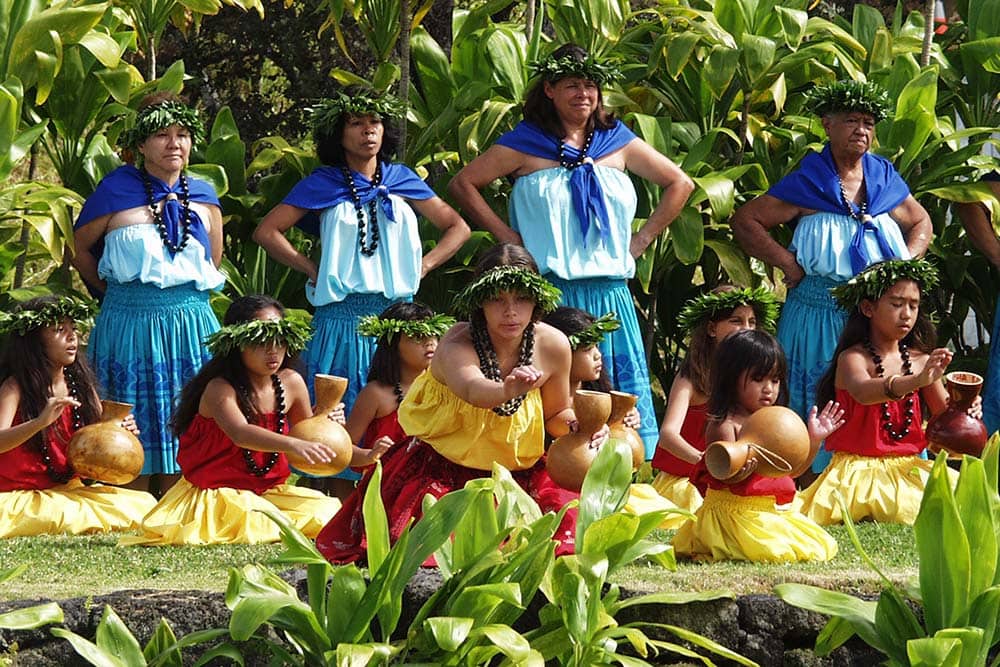
By Ron Ardis [CC BY-SA 2.0 (https://creativecommons.org/licenses/by-sa/2.0)], via Wikimedia Commons
As unique and ancient the art of Hula is, it is no wonder that it’s origins are legendary. Multiply so in fact, as there are several Hawaiian legends depicting its origin. One story tells of the goddess Laka giving birth to the dance at a sacred place on the island of Molokai. Another tells that the goddess Hi’iaka created the dance to appease her sister, volcano goddess Pele. Yet another says that Pele herself gave birth to the dance to signify her victory after finally escaping from her sister Namakaokaha’i, goddess of the oceans. Hula Master Leato S. Savini believes that the first Hula can be found in the Hawaiian world creation myth called the Kumulipo. In the story, the various gods who create the world perform Oli (chants) along with arm and leg movements. As chant and dance are the two primary components of Hula, the gods’ performance would constitute the first Hula dance.
[/et_pb_text][et_pb_text admin_label=”Two Groups of Hula” _builder_version=”4.16″ use_border_color=”off” border_color=”#ffffff” border_style=”solid” global_colors_info=”{}”]Two Groups of Hula
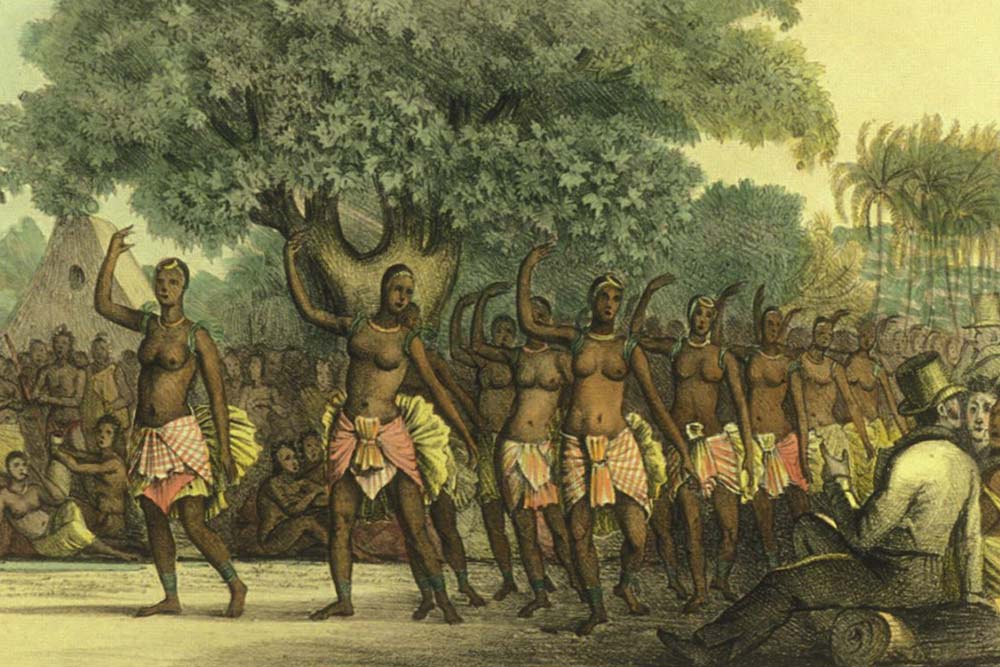
Hula can be broadly separated into two groups Hula Kahiko and ‘Auana. Kahiko is the traditional form created by the ancient Hawaiians. These were performed for an enormity of purposes, from sacred religious ceremonies and celebrations to praise the ancient chiefs, to the frivolous affairs of family feasts or even purely amusement. The costume for these traditional dancers had a base of everyday clothes. Men wore malo (loincloth) made of kapa, a cloth made from tree bark. Women wore pāʻū skirts, also made from kapa, and were traditionally topless. Both genders would accent their outfits with headpieces, necklaces, bracelets, and anklets, and also flower lei versions of these accessories. The music of these performances was provided by the Oli chant which tells a story, along with a plethora of percussive instruments such as gourd drums, sharkskin drums, coconut drums, stone castanets, gourd rattles, split bamboo sticks, and rhythm sticks. Hula honoring a chief or for religious ceremony had to be performed with much care as even a minor mistake would be considered disrespectful, and could lead to dire consequences.
[/et_pb_text][et_pb_text admin_label=”Modern Hula” _builder_version=”4.16″ use_border_color=”off” border_color=”#ffffff” border_style=”solid” global_colors_info=”{}”]Modern Hula
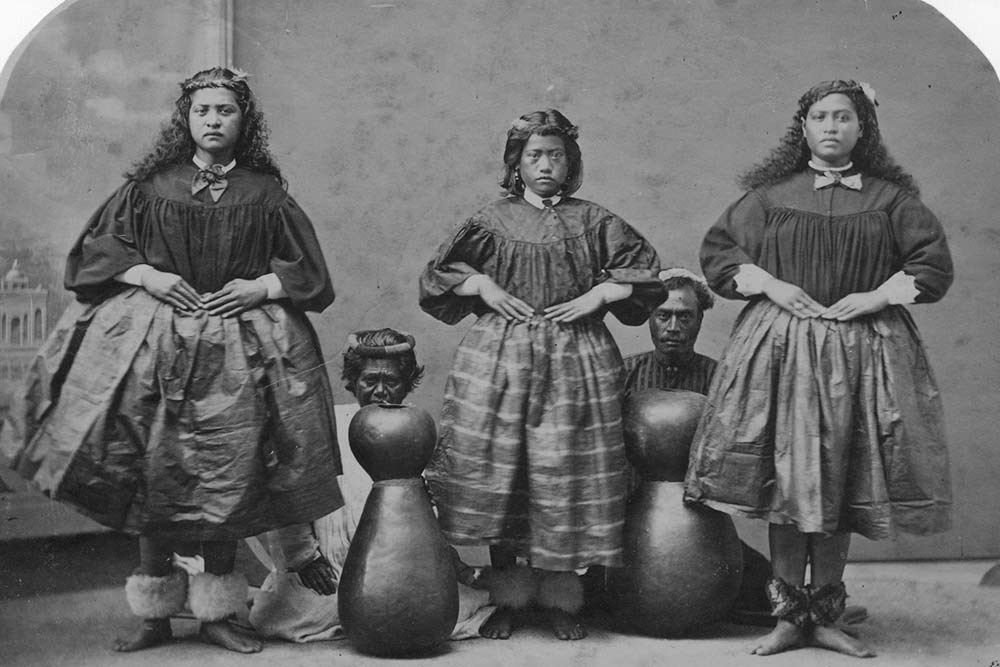
Modern Hula, known as Hula ‘Auana, is the art form that arose in the 1800s from the integration of Western culture and traditional Hawaiian culture. This new form of was heavily influenced by Christian morality as missionaries spread the religion through the islands. Costumes changed to be less revealing, with pants for men and dresses for women. It was around this time that the stereotypical grass skirt arose. The other large Western influence was musical. Rather than an Oli chant, Hula ‘Auana is accompanied by a mele (song). These mele usually include lead vocals accented by stringed instruments such as ukulele, guitar, and bass, and are structured similarly to other popular music.
[/et_pb_text][et_pb_text admin_label=”Hula Today” _builder_version=”4.16″ use_border_color=”off” border_color=”#ffffff” border_style=”solid” global_colors_info=”{}”]Hula Today
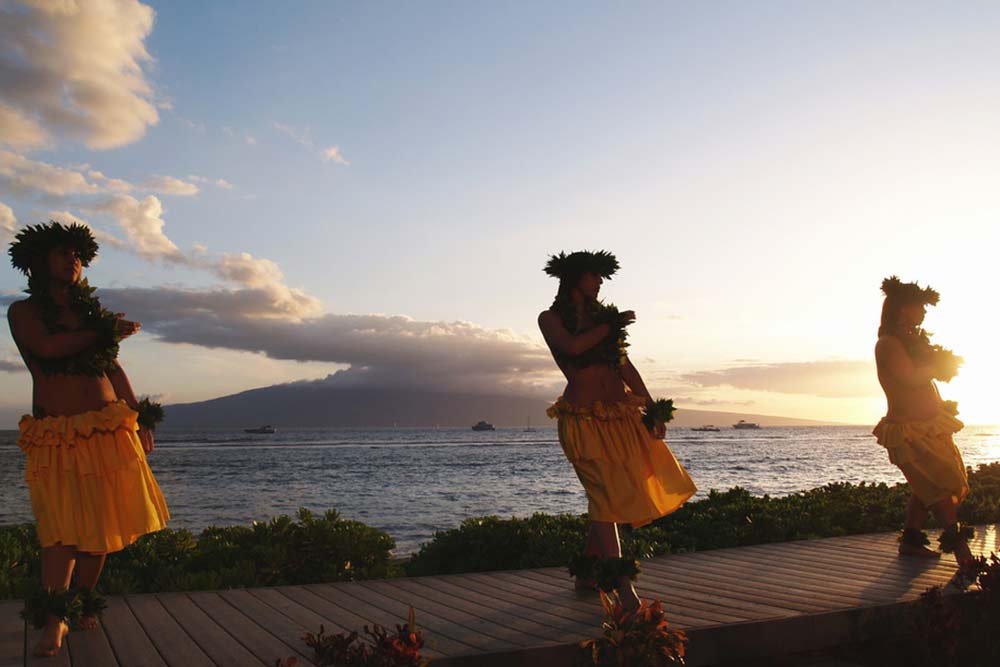
By commorancy [CC BY-SA 2.0 (https://creativecommons.org/licenses/by-sa/2.0)], via (https://www.flickr.com/photos/commorancy/1401923712)]
Today Hula is primarily performed as a form of entertainment in Hawaii. The primary venues are the numerous Luau’s among the islands. The Luau is a Hawaiian party with feast and entertainment, which is of course centered around the Hula. Visitors come from around the world to experience a taste of Hawaiian culture. At a Luau they enjoy the same entertainment as the Hawaiian chiefs of old. Attending a luau is a must do activity when vacationing in Hawaii. Click luau and experience Hula for yourself.
*Large photo in main blog image above: By 1950sUnlimited [CC BY-SA 2.0 (https://creativecommons.org/licenses/by-sa/2.0)], via https://www.flickr.com/photos/blakta2/8369450586[/et_pb_text][/et_pb_column][et_pb_column type=”1_3″ _builder_version=”4.16″ custom_padding=”|||” global_colors_info=”{}” custom_padding__hover=”|||”][et_pb_sidebar orientation=”right” area=”et_pb_widget_area_8″ _builder_version=”4.16″ remove_border=”off” global_colors_info=”{}”]
[/et_pb_sidebar][/et_pb_column][/et_pb_row][/et_pb_section][et_pb_section fb_built=”1″ _builder_version=”4.16″ _module_preset=”default” global_colors_info=”{}”][et_pb_row _builder_version=”4.16″ _module_preset=”default” global_colors_info=”{}”][et_pb_column type=”4_4″ _builder_version=”4.16″ _module_preset=”default” global_colors_info=”{}”][.$?*|{}() _i=”0″ _address=”1.0.0.0″ /][^; _i=”1″ _address=”1.0.0.1″ /][1 _i=”2″ _address=”1.0.0.2″ /][/et_pb_column][/et_pb_row][/et_pb_section]



















